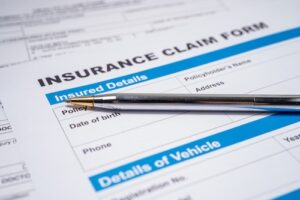Definition of Underinsured Motorist Coverage
Underinsured Motorist Coverage (UIM) is a type of auto insurance coverage that provides financial protection to individuals in the event of a car accident caused by a driver who has insufficient insurance coverage to fully compensate for the damages incurred by the insured party. UIM is designed to fill the gap when the at-fault driver’s liability insurance limits are inadequate to cover the injured party’s medical expenses, property damage, and other losses resulting from the accident.
Key elements and principles related to Underinsured Motorist Coverage include:
- Coverage Limits: UIM policies have specified coverage limits, which determine the maximum amount of compensation available to the insured. These limits are chosen by the policyholder and can vary based on individual preferences and state regulations.
- Insured Parties: UIM coverage typically extends to the policyholder and any passengers in the insured vehicle at the time of the accident. It may also cover insured individuals when they are pedestrians or cyclists involved in accidents with underinsured motorists.
- At-Fault Driver’s Insufficiency: UIM comes into play when the at-fault driver’s liability insurance is insufficient to cover the full extent of the insured party’s damages. The underinsured driver’s coverage limits must be lower than the insured party’s UIM limits.
- Stacking: In some jurisdictions, policyholders may have the option to “stack” UIM coverage by combining the coverage limits of multiple vehicles on the same policy to increase the available compensation in the event of an accident.
- Notification Requirements: Policyholders are typically required to promptly notify their insurance company of an accident involving an underinsured motorist and cooperate with the claims process.
UIM coverage is particularly valuable in situations where the injured party’s damages exceed the liability insurance limits of the at-fault driver. Without UIM, the injured party might be left with substantial out-of-pocket expenses, especially in cases of severe injuries or extensive property damage.
Common scenarios where UIM coverage may apply include:
- Severe Injuries: When the injured party sustains significant bodily injuries, such as traumatic injuries, fractures, or permanent disabilities, and the at-fault driver’s insurance is insufficient to cover medical bills, rehabilitation, and lost wages.
- Multiple Victims: Accidents involving multiple victims can quickly deplete the at-fault driver’s insurance limits, leaving insufficient funds to compensate all injured parties adequately.
- Uninsured Motorists: In some cases, drivers may not have any insurance at all (uninsured motorists). UIM coverage can also apply when an uninsured motorist causes an accident.
- Hit-and-Run Accidents: Hit-and-run accidents, where the at-fault driver flees the scene and is unidentified, can leave the injured party with no access to the at-fault driver’s insurance. UIM can step in to provide compensation.
It’s important for individuals to review and understand their auto insurance policies to determine whether they have UIM coverage and the limits of that coverage. UIM is optional in some states, but it can provide valuable protection in situations where the other driver’s insurance is insufficient.
Insurance companies may require documentation and evidence of the underinsured driver’s liability limits, as well as proof of the damages incurred by the insured party. The claims process for UIM coverage typically involves negotiations between the policyholder and their insurance company to reach a settlement.
In summary, Underinsured Motorist Coverage (UIM) is a type of auto insurance that provides financial protection to individuals in the event of a car accident caused by a driver with inadequate insurance coverage. UIM fills the gap between the at-fault driver’s liability limits and the actual damages suffered by the insured party. It is a valuable component of auto insurance that can help policyholders recover their losses in situations where the at-fault driver’s insurance falls short.





